 Earlier this month, we shared some tips on singing authentically in every style. Here are some further words of advice on the subject:
Earlier this month, we shared some tips on singing authentically in every style. Here are some further words of advice on the subject:
Diction and dialect also contribute to making the sound more authentic.
Country Style
Country singing is filled with dropped final consonants such as G; in country music you would say singin’ rather than singing. Many country singers also emphasize the more closed vowels of a dipthong much more than signers in other styles; “Why-eeeeeeee oh-oooo Why-eeeeeee” is an example of this. Normally when we sustain vowels on a pitch we try to avoid dipthong travesties, but for authentic country singing, it is fine to emphasize the second vowel sound.
Musical Theatre Style
Musical theatre singing today runs the gamut from the classical style needed for “The Phantom of the Opera”, to the rock style of “Rent”, to the more traditional vocal styles in musicals such as “Oklahoma” and “Carousel”. However, the two main delineations in musical theatre are between what is known as ‘legit’ singing and ‘belt’ singing styles.
Of course, for healthy singing and longevity, you don’t want to take a pure belt sound too high; developing and using a mix will make you sound like you are belting, but without the vocal trauma associated with high belt. This style of singing is brighter and more forward; it helps if you can keep the middle portion of your tongue in a high and forward position and the tip of the tongue touching the lower front teeth, for sustained pitches. The word YEAH said energetically with the easy call sound will put your vocal tract in the right position for this sound.
The larynx is just about where it is when you are speaking- in other words, at speech level, except for characters such as Adelaide in “Guys and Dolls”, where a higher larynx is needed to create the character voice.
Don’t lift the soft palate too high; that would give you a sound that is too classical. The tone quality you are looking for is bright and ringing, and even in some cases, a bit nasal or brassy sounding, depending on the character and era of the show. You will feel a sympathetic vibration in the ‘mask’ or front of the face when you are singing with the mix-that-sounds-like-belting vocal quality. You can show a few front teeth, but don’t grimace in a wide grin; that will cause laryngeal tension and result in pulling the lower register too high.
Listen to Sutton Foster and Shoshana Bean for examples of singers who sound like they are belting but are singing with a strong mix.
Legit Musical Theatre Style
This is basically the same as classical singing. You will use a lower larynx position, raised velum or soft palate, constant vibrato on every pitch, a darker tone quality, a wide pharynx or throat space, and crisp diction and pronunciation. Avoid nasality in the tone by maintaining a raised soft palate (but don’t tense the soft palate). The feeling is of creating a larger, wider space in the mouth and throat, like you are holding an egg on the back of your tongue- but don’t use this image to create tension in the tongue or soft palate- just a soft, open feeling.
The lips are a bit more forward, and the jaw is loose and relaxed, dropping more for the higher pitches.
Stylistically, the use of constant vibrato is one of the most prominent features of legit singing. You definitely don’t want to do this in rock styles, but lots of vibrato is absolutely appropriate in legit theatre singing style.
For women, this kind of singing uses a more ‘heady’ vocal quality, and bridging occurs much earlier than it does in mixing or belting styles. The vowels are shaded darker and the lip space tends to be smaller and more round. For men, the sound is more virile and manly than most pop singing; the wider pharynx and lifted soft palate contribute to this quality. Male tenors also tend to employ more of the ring of the singer’s formant. A good word to help you find the right sound for legit singing would be a deep, dark WOH sound in the lower register for men and a heady YOU sound in the upper register for women.
Listen to Julie Andrews and John Raitt for good examples of legit theatre singers.
Jazz Style
Jazz singers use many different kinds of vocal sounds, from the gravelly voice of Louis Armstrong, to the bright trumpet-like vocal quality and scat singing of Ella Fitzgerald, to the almost classical sounds of Sarah Vaughan to the nasal and iconic quality of Billie Holiday, to the R & B influenced sounds of George Benson, to the more contemporary vocal quality of Diana Krall and Harry Connick Jr.
Improvisational ability is important, particularly in scat singing, where the voice is meant to sound like an instrument while vocalizing on various syllables.
Vibrato is often delayed, employing a straight tone followed by a release into vibrato. Some jazz is soft and intimate, sung with a small combo, and other jazz is brassy and bright and uses large ‘big band’ orchestrations for accompaniment.
Most jazz singers (other than Sarah Vaughan) use a very conversational vocal tone and model vibrato styles to imitate instruments such as the trumpet. Frank Sinatra is an example of a jazz singer who used a very conversational vocal sound.
The most important elements in jazz are phrasing and rhythm. Most jazz singers hardly ever sing right on the downbeat as rock singers tend to do, but instead use backphrasing (starting a phrase late) and rubato (robbing the time) as well as syncopated rhythms. Individualism and stylistic interpretation make every singer’s rendition of the standards of jazz singing (the songs that everyone knows and sings) unique. The Great American Songbook is a collection of jazz standards every singer should know, and there is a version of The Real Book used by all jazz musicians for gigs, that is specifically for vocalists, and contains lyrics to many instrumental jazz tunes like Take Five by Dave Brubeck.
Changing the melody, note durations, tempo, and various other elements of a jazz song are perfectly acceptable- the point is to give your individual and unique interpretation of a song that has been sung by many, many other singers. Adding runs and melismas to the melody is fine, as long as they fit the style of the song. Changing the phrasing pattern from the original version is done often.
Jazz is one vocal idiom where vocalists often sustain pitches on consonants; for example “I llllllllllllovvvvvvvvvvve the mannnnnnnnnnnnnn too mmmmmmuch”, where the vocalist lingers on the consonants, rather than emphasizing and lengthening the vowels, as is preferred in other styles of singing.
Breathy singing for intimate jazz songs creates a mood; Marilyn Monroe, though not a great singer, was very adept at the breathy and intimate quality of a jazz ballad. Flora Purim’s breathy vocal sound was effective in the Brazilian styles of Jobim such as The Girl from Ipanema.
To learn about other styles of singing, check back next month!
Sing Like A Star Studios offers private lessons for individuals of all ages and experience levels in East Cobb and Alpharetta, Georgia. To learn more about the studio and to schedule a class, contact us online today!


